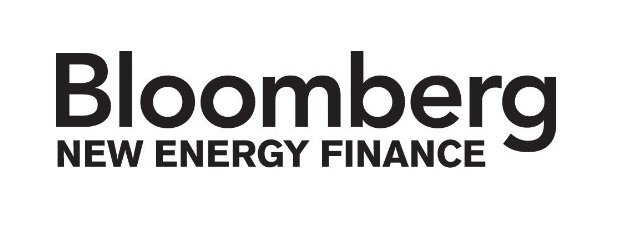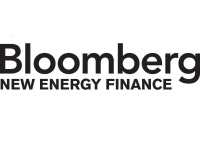Lifestyle
TOPPING WEALTHIER NATIONS, KEY EMERGING MARKETS ATTRACT CLEAN ENERGY INVESTMENT
RECORD $126BN IN CLEAN ENERGY INVESTMENT

(Source: Bloomberg New Energy Finance)
Developing nations eclipsed the world's wealthiest countries in 2014, attracting more clean energy investment and building more wind, solar, and other renewable power generation than ever before, according to a global assessment released today.
'Climatescope', the clean energy country competitiveness index, interactive report, and online tool supported by the UK government, US government, and the Inter-American Development Bank Group offers a compelling portrait of clean energy activity in 55 emerging markets in Africa, Asia and Latin America and the Caribbean.
'Climatescope', the clean energy country competitiveness index, interactive report, and online tool supported by the UK government, US government, and the Inter-American Development Bank Group offers a compelling portrait of clean energy activity in 55 emerging markets in Africa, Asia and Latin America and the Caribbean.
The group includes major developing nations China, India, Pakistan, Brazil, Chile, Mexico, Kenya, Tanzania and South Africa, as well as dozens of others.
News of the rising prominence of lesser developed countries comes on the eve of an important round of UN-organized climate negotiations kicking off in Paris at the end of November. Those talks have often focused on the question of how much capital wealthier countries should make available to lesser developed countries to address the climate challenge.
News of the rising prominence of lesser developed countries comes on the eve of an important round of UN-organized climate negotiations kicking off in Paris at the end of November. Those talks have often focused on the question of how much capital wealthier countries should make available to lesser developed countries to address the climate challenge.
Climatescope's key findings include :
- For the first time ever, over half of all new annual investment into clean energy power generating projects globally went toward projects in emerging markets, rather than toward wealthier countries.
- New investment in renewables soared in 2014 in the 55 Climatescope countries assessed to hit a record annual high of $126bn ““ up $35.5bn, or 39%, from 2013 levels.
- The results were substantially bolstered by the remarkable growth in China, which added 35GW of new renewable power generating capacity all on its own ““ more than the 2014 clean energy build in the US, UK, and France combined.
- For the first time ever, over half of all new annual investment into clean energy power generating projects globally went toward projects in emerging markets, rather than toward wealthier countries.
- New investment in renewables soared in 2014 in the 55 Climatescope countries assessed to hit a record annual high of $126bn ““ up $35.5bn, or 39%, from 2013 levels.
- The results were substantially bolstered by the remarkable growth in China, which added 35GW of new renewable power generating capacity all on its own ““ more than the 2014 clean energy build in the US, UK, and France combined.
- Meanwhile, 'South-South' investment (funds deployed in Climatescope nations from banks or other financial institutions based in those countries) surged to $79bn in 2014 from $53bn the year prior.
- Continuing declines in clean energy costs appear to be driving growth. Costs associated with solar photovoltaic power have ticked down 15% year-on-year globally. Solar is particularly competitive in emerging markets which often suffer from very high power prices from fossil generation while also enjoying very sunny conditions.
- Continuing declines in clean energy costs appear to be driving growth. Costs associated with solar photovoltaic power have ticked down 15% year-on-year globally. Solar is particularly competitive in emerging markets which often suffer from very high power prices from fossil generation while also enjoying very sunny conditions.
- A total of 50.4 gigawatts (GW) of new clean capacity was built in Climatescope countries, marking a 21% uptick from the prior year. In another first, renewables capacity deployed in emerging markets topped that in wealthier Organization for Economic Co-operation and Development (OECD) nations.
- On a percentage basis, clean energy capacity is growing twice as quickly in Climatescope nations compared to OECD ones.
Progress in 2014 was achieved despite a number of countries in the survey seeing economic growth rates slow. Average gross domestic product growth across Climatescope nations slipped to 5.7% in 2014 from 6.4% in 2013 with the slow-down most apparent in major nations, Brazil, South Africa, and China.
- On a percentage basis, clean energy capacity is growing twice as quickly in Climatescope nations compared to OECD ones.
Progress in 2014 was achieved despite a number of countries in the survey seeing economic growth rates slow. Average gross domestic product growth across Climatescope nations slipped to 5.7% in 2014 from 6.4% in 2013 with the slow-down most apparent in major nations, Brazil, South Africa, and China.
Despite the pullback, these three countries attracted a total of $103bn in new clean energy investment in 2014.
'Climatescope' was first developed in 2012 by The Multilateral Investment Fund /Inter-American Development Bank Group and Bloomberg New Energy Finance, and initially evaluated 26 countries in Latin America and the Caribbean. In 2014, it was expanded to include 19 countries in Africa, 10 in Asia, as well as 15 provinces in China and 10 states in India thanks to additional support from DFID and USAID.
'Climatescope' was first developed in 2012 by The Multilateral Investment Fund /Inter-American Development Bank Group and Bloomberg New Energy Finance, and initially evaluated 26 countries in Latin America and the Caribbean. In 2014, it was expanded to include 19 countries in Africa, 10 in Asia, as well as 15 provinces in China and 10 states in India thanks to additional support from DFID and USAID.
A country's ranking depends upon various factors: its clean energy investment policy, its market conditions, the structure of its power sector; the number and makeup of local companies operating in clean energy; and efforts toward reduction of greenhouse gas emissions.
The Department for International Development (DFID) leads the UK government's work to end extreme poverty. A ministerial Department, its overall aim is to reduce poverty in poorer countries, in particular through achieving the Global Goals.
The Department for International Development (DFID) leads the UK government's work to end extreme poverty. A ministerial Department, its overall aim is to reduce poverty in poorer countries, in particular through achieving the Global Goals.
President Obama's Power Africa initiative is a partnership among the U.S. government, African governments, the private sector, international organizations, and development partners to double access to electricity in sub-Saharan Africa. Power Africa will add more than 30,000 megawatts of cleaner, more efficient electricity generation capacity in sub-Saharan Africa.
Source : Bloomberg New Energy Finance
Ruby BIRD
http://www.portfolio.uspa24.com/
Yasmina BEDDOU
http://www.yasmina-beddou.uspa24.com/
Source : Bloomberg New Energy Finance
Ruby BIRD
http://www.portfolio.uspa24.com/
Yasmina BEDDOU
http://www.yasmina-beddou.uspa24.com/
Ruby Bird Yasmina Beddou Clen Energy Investment Key Emerging Markets Topping Wealthier Nations Climate Talks Developing Nations Important Round Nations Wind Solar Renewable Power
Liability for this article lies with the author, who also holds the copyright. Editorial content from USPA may be quoted on other websites as long as the quote comprises no more than 5% of the entire text, is marked as such and the source is named (via hyperlink).






